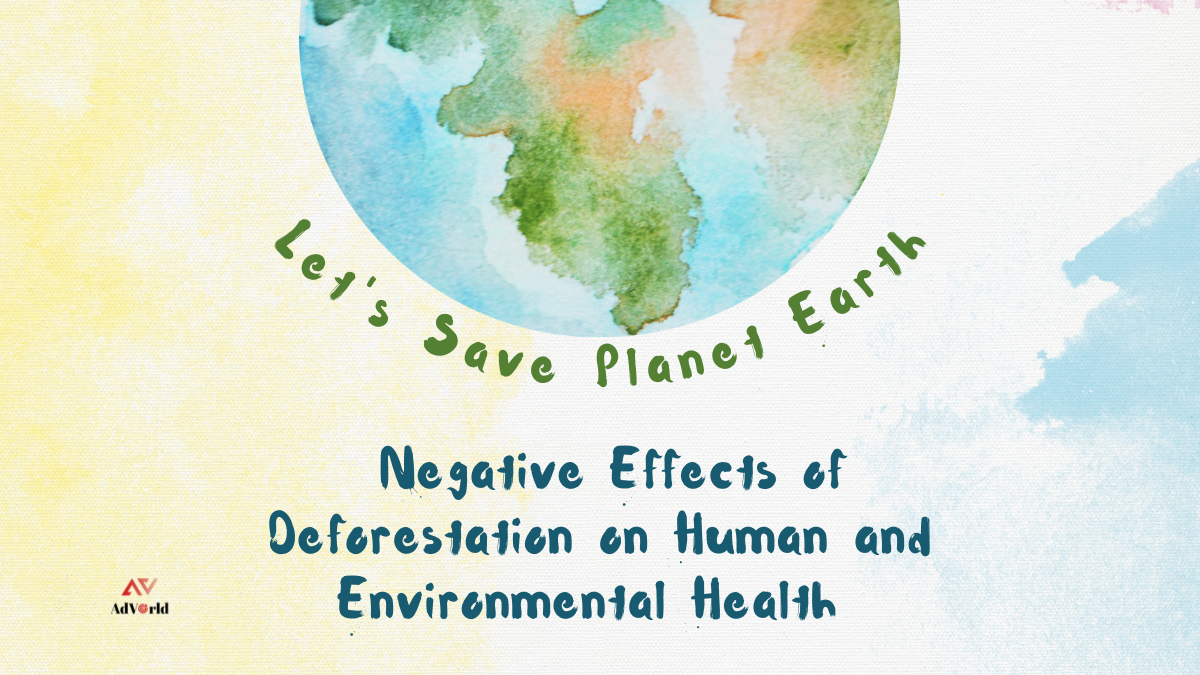Forests are a crucial part of our environment as they make the planet Earth liveable for all of us. Forests are not only a home to millions of flora and fauna but they also balance greenhouse gas emissions thus playing a vital role in the carbon cycle, making air breathable and protecting against climate change. But human activity is destroying them at an alarming rate.
Companies are cutting down more and more trees to make space for agriculture and other industries. Deforestation is threatening our environment, impacting human lives and killing millions of animals every year.
What is Deforestation?
Deforestation means the decrease in the forest areas throughout the world which are lost for other human activities like agricultural croplands, mining, urbanization, etc. With the increase in the rate of selfish human activities since 1960, deforestation has been negatively affecting climate, biodiversity and ecosystems.
In simple words, clearing, destroying of trees through deliberate, natural or accidental means is called deforestation. It can occur in any area densely populated by plant life. It can occur for a number of reasons like farming, cattle ranching, logging for materials and development, etc. If we, humans, continue to destroy the forests at current rate, forests may reach their breaking point.
What are the causes of deforestation?
Human activities, in the nutshell, are the driving force behind global deforestation including multiple factors of natural origin. According to the Food and Agriculture Organization (FAO), the expansion of agriculture caused nearly 80% of global deforestation, with the construction of infrastructures such as roads or dams, together with mining activities and urbanization, making up the remaining causes of deforestation.
- Agriculture
- Livestock Ranching
- Construction of Human Infrastructures
- Forest Fires
- Illegal Logging
- Mining
- Paper
- Urbanization
- Desertification of Land
Environmental Effects of Deforestation-
1. Loss of Habitat & Wildlife Extinction-
Habitat loss is one of the greatest dangers to plants and animal species across the world and agriculture is the main cause. About 70% of the land animals and plant species live in the forests. Losing habitat means animals lose the shelter they need for their survival. Deforestation not only threatens the species that are known to us but also the unknown. The trees in the forest not only provide shelter to the animals but also provide a canopy that regulates the temperature.
The habitat loss due to deforestation is responsible for the animal species to die out slowly as their breeding rates fall and competition for food becomes even more intense.
2. Soil Erosion & Flooding-
The roots of the trees hold the soil and keep it in one place. Trees help the land to retain water and top soil which is rich in essential nutrients to sustain plant life. Cutting down of trees loosens the soil thus leaving it exposed to winds and rain. Deforestation, therefore, speeds up soil erosion.
When soil erodes and washes away, it causes farmers to move on and maintain and carry on the cycle. The left-behind barren lands thus becomes more susceptible to flooding, especially in coastal regions.
3. Increase in Greenhouse Gases-
Forests balance world’s carbon dioxide levels in the atmosphere. Cutting down forests releases carbon dioxide back into the atmosphere. We, therefore, lose the way of removing excess carbon dioxide from the air if the fallen trees are not replanted. This gradually leads to increased carbon emissions contributing in the increase in greenhouse effect and thus accelerating climate change.
Effects of Deforestation on Humans-
1. Health-
Destroying forest habitats provokes animals and insects to take shelter in the populous villages surrounding those forests. This unprecedented amount of contact between humans and animals is not only unnatural but dangerous. This contact can transmit various pathogens to humans that can further lead to different illnesses and diseases. A simple and common example to this is mosquitoes spreading malaria to humans.
2. Food Insecurity-
Deforestation may lead to long-term food insecurity in the future. Forests provide clean drinking water and food. People get food and medicines directly from the forests and also cultivate crops on the healthy, fertile soil. Cutting of forests leads people to lose these resources that they need to survive thus pushing them into food insecurity.
3. Local People and Their Livelihood-
According to The International Union for the Conservation of Nature (IUCN), about 25% of the world’s population relies on the forests for their livelihood, especially the poorest countries. Therefore, these indigenous populations of the globe suffer the most severe and worst impacts of the forest destruction.
Extensive deforestation doesn’t just hurt forests and the animals that live in them: it harms our entire planet. Thankfully, we all can help limit the damage by using eco-friendly, handmade, tree-free and chemical-free.
This is our crucial step towards protecting the precious habitats. What’s yours?

Good information.
LikeLike